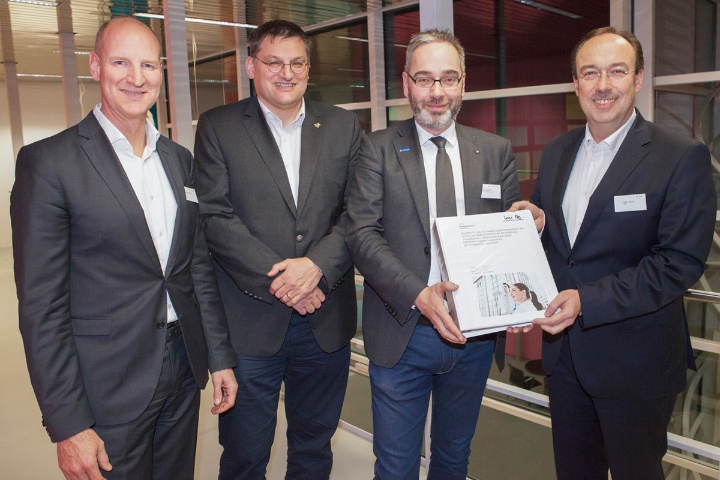On November 30, 2018 the High-Performance Computing Center of the University of Stuttgart (HLRS) and Hewlett Packard Enterprise (HPE), the number one market leader in high-performance computing (HPC), signed a contract to build and install a new supercomputer that HLRS is calling Hawk. The new computing system will be 3.5 times faster than the existing HLRS supercomputer, Hazel Hen, and will be the world's fastest supercomputer for industrial production. Hawk will support academic research and industry — particularly in engineering-related fields — to advance applications for energy, climate, mobility, and health.

At the contract signing ceremony, University of Stuttgart Chancellor Jan Gerken emphasized that the university's research infrastructure is a driver of international cutting-edge research. "For years HLRS has been counted among the most internationally recognized flagships of the University of Stuttgart's research infrastructure. In the future, the new supercomputer will offer excellent opportunities for raising the profile of research in the university's core scientific areas and will attract international talent from the sciences and the business community," he said.
"Hawk's sizable increase in performance in comparison to the existing system will make it possible to undertake much more complex and precise simulations," said Prof. Dr. Michael M. Resch, HLRS Director. For example, turbulence surrounding a flying airplane or helicopter could be simulated more realistically. Similarly, richer molecular dynamics models could be developed to understand how molecules behave during combustion in a motor or power plant and in other biochemical processes. More precise climate simulations focusing on specific regions or even single locations could also potentially become possible. The availability of such a powerful computer will open new opportunities for innovation in these and other fields. "The real winners will be our user community of computational engineers in academic research and industry," Resch explained.
24 petaFLOPs, 5,000 nodes
For its speed Hawk can thank the newest high-performance computing platform from HPE. The machine will be outfitted with a next-generation EPYC™ processor named Rome, whose memory subsystem is particularly well suited for efficiently running applications used for simulation. Hawk will have a theoretical peak performance of 24 petaFLOPs, and consist of 5,000 nodes. “Our next-generation, purpose-built HPC system is dramatically increasing speed and performance for Hawk, advancing research and accelerating innovation for future science and industrial applications,” said Bill Mannel, vice president and general manager for HPC and AI at Hewlett Packard Enterprise.
The manufacture and installation of Hawk will cost €38 million. Funding will be provided under the auspices of the Gauss Centre for Supercomputing (GCS), the alliance of Germany's three national supercomputing centers. Funding will be equally supplied by the State of Baden-Württemberg's Ministry of Science, Research and Art, and the German Federal Ministry of Education and Research (BMBF).
In addition to HPE addressing new hardware design for HLRS, the contract between HLRS and HPE specifies a four-year collaboration focusing on user application, technical support, and enabling data analytics and machine learning. This joint effort also supports HLRS's mission to empower researchers in the coming years in basic and applied science, scaling their applications to the increasingly massive parallel supercomputing systems currently on the horizon.
Expert Contact:
Prof. Dr. Michael M. Resch, Höchstleistungsrechenzentrum Universität Stuttgart, Tel. +49 (0) 711 / 685-87200, Email

